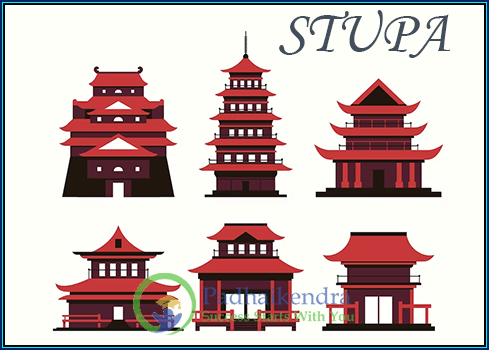Meaning of the term Stupa used during ancient India
A Stupa is a type of Buddhist monument or shrine that was used in ancient India. The term “Stupa” is derived from the Sanskrit word “stupa,” which means “heap” or “pile.”
Stupas were originally used to house the remains of important Buddhist figures, such as monks or nuns, and were often constructed at significant Buddhist pilgrimage sites. Over time, the purpose of Stupas expanded to include commemoration of important Buddhist events or teachings.
Stupas are typically hemispherical or dome-shaped structures, with a square base and a spire or pinnacle at the top. They are usually made of brick or stone, and may be decorated with carvings or inscriptions.
The interior of a Stupa typically contains a relic chamber, where the remains of important Buddhist figures may be housed. The exterior of the Stupa is often decorated with symbolic carvings or images, such as the Buddha’s eyes or the eight auspicious symbols.
Stupas are important symbols of Buddhist devotion and are still used as places of worship and pilgrimage today. They are often seen as representing the Buddha’s teachings, and the journey from ignorance to enlightenment.
The most famous Stupa in ancient India is the Sanchi Stupa, located in the state of Madhya Pradesh. This Stupa was originally built in the 3rd century BCE, and was expanded and renovated over the centuries. The Sanchi Stupa is now a UNESCO World Heritage site and is visited by thousands of pilgrims and tourists each year.

